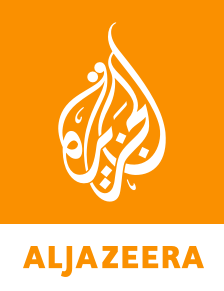Yara Youssef Abu Kweik, 16, is processing her emotions by painting scenes of suffering from her daily life.
Published On 5 Nov 2025
For the children of Gaza, front-line victims and witnesses to unspeakable violence, Israel’s more than two-year genocidal war has left deep wounds, both physical and psychological, ones that will remain long after it comes to an end.
Tens of thousands have lost parents and siblings while many others have suffered life-changing injuries. Some are also experiencing trauma from witnessing the deaths of other children. They have been displaced numerous times, lost their homes and had their educations stamped out.
Recommended Stories
list of 3 items- list 1 of 3Children in Gaza face more trauma, despite ceasefire
- list 2 of 3We survived the war, we may not survive the ceasefire
- list 3 of 3Gaza’s traumatised children urgently need the hope education offers
With few resources available to help them process their pain, young people are finding creative outlets for their grief.
Yara Youssef Abu Kweik, aged 16, is pouring her emotions into her art.
 Yara Youssef Abu Kweik speaks to Al Jazeera about how she uses painting to cope with her trauma and grief [Screengrab/Al Jazeera]
Yara Youssef Abu Kweik speaks to Al Jazeera about how she uses painting to cope with her trauma and grief [Screengrab/Al Jazeera]“I used to draw ordinary, spontaneous, colourful things,” Youssef Abu Kweik told Al Jazeera.
“As the war came on, I started to feel that I needed to show the world how we [Palestinians in Gaza] are living.”
Youssef Abu Kweik told Al Jazeera that she uses her drawings and paintings to show what she has been witnessing and experiencing in her daily life over the past two years.
“I drew a picture of children struggling to grab handfuls of water. The famine we have endured for years, life in tents, all these sufferings have had a toll on my soul.”
 A painting by Yara Youssef Abu Kweik [Screengrab/Al Jazeera]
A painting by Yara Youssef Abu Kweik [Screengrab/Al Jazeera]While drawing allows Youssef Abu Kweik an outlet to “vent” her feelings, the scenes she draws also cause her to “get flashbacks”.
Psychologists warned that more than 80 percent of Gaza’s children now display symptoms of severe trauma, including headaches, stomachaches, bone pain, hair loss, vitiligo and weakened immunity.
“The second time I was displaced, I started painting the things that have changed all of us. As it was the second time I was forced out of my home, I started to put it into drawing. The pain and suffering, especially the people who have no shelter to go to, not even tents. I drew a picture of children alongside their parents sleeping on the road, exposed to fire, shells and, above all, to the elements,” she said.
 A painting by Yara Youssef Abu Kweik [Screengrab/Al Jazeera]
A painting by Yara Youssef Abu Kweik [Screengrab/Al Jazeera]Even before Israel’s war on Gaza began, children in Gaza suffered from significant mental health issues.
According to a 2022 report by Save the Children, four out of five children in Gaza were living with depression, grief and fear while more than half struggled with suicidal thoughts.
UNICEF estimated that more than 64,000 children have been killed or injured in Gaza since Israel’s war began after the Hamas-led October 7, 2023, attacks on southern Israel. Israel’s war on Gaza has killed at least 68,858 people and wounded 170,664.
A United States-brokered ceasefire between Israel and the Palestinian group Hamas that came into effect on October 10 has provided little respite to children and adults alike in Gaza due to repeated Israeli strikes and severe restrictions on the flow of food, medical supplies and other aid.
According to Gaza’s Ministry of Health, more than 200 people have been killed and more than 500 injured in Israeli attacks since the ceasefire took effect.
Despite her suffering and that of those around her, Youssef Abu Kweik is determined to improve her painting skills and “send my message out to the world”.
That message is clear and succinct: “I represent all the Palestinian children in the Gaza Strip, and on their behalf, I say: Enough is enough. We want to live.”
 A painting by Yara Youssef Abu Kweik [Screengrab/Al Jazeera]
A painting by Yara Youssef Abu Kweik [Screengrab/Al Jazeera]
 1 month ago
35
1 month ago
35

















































